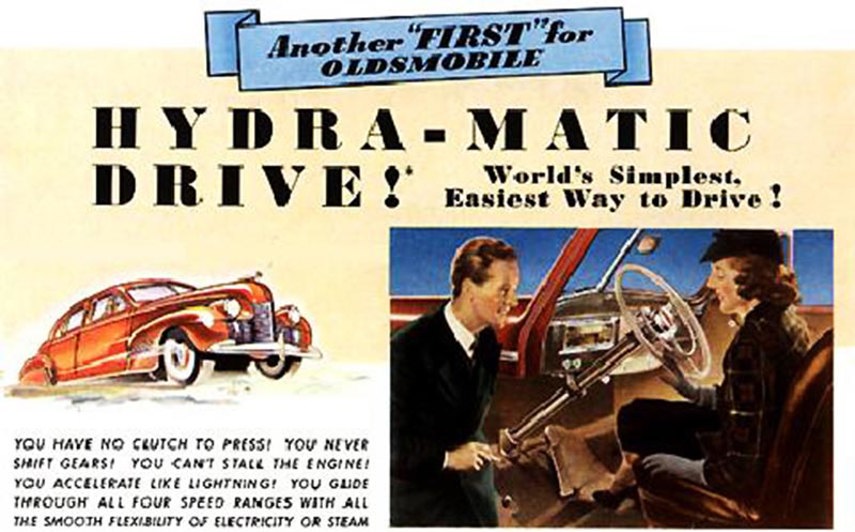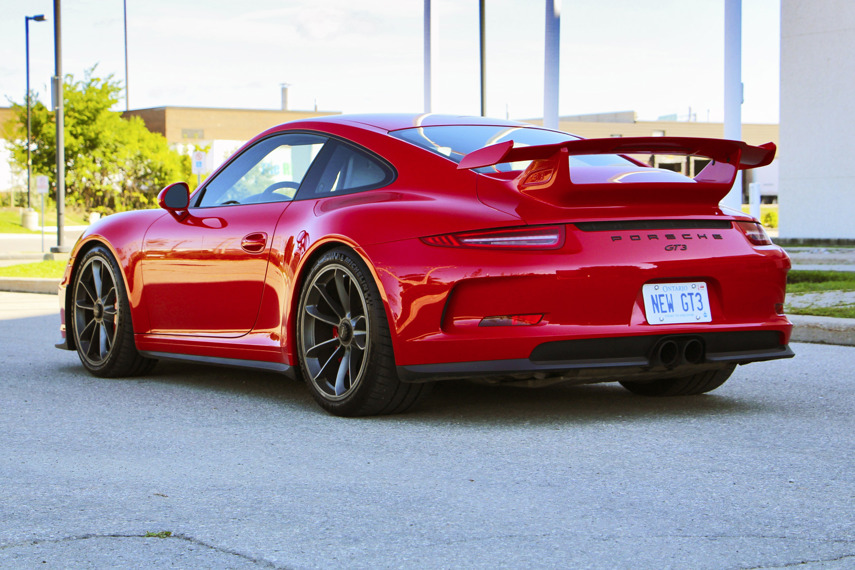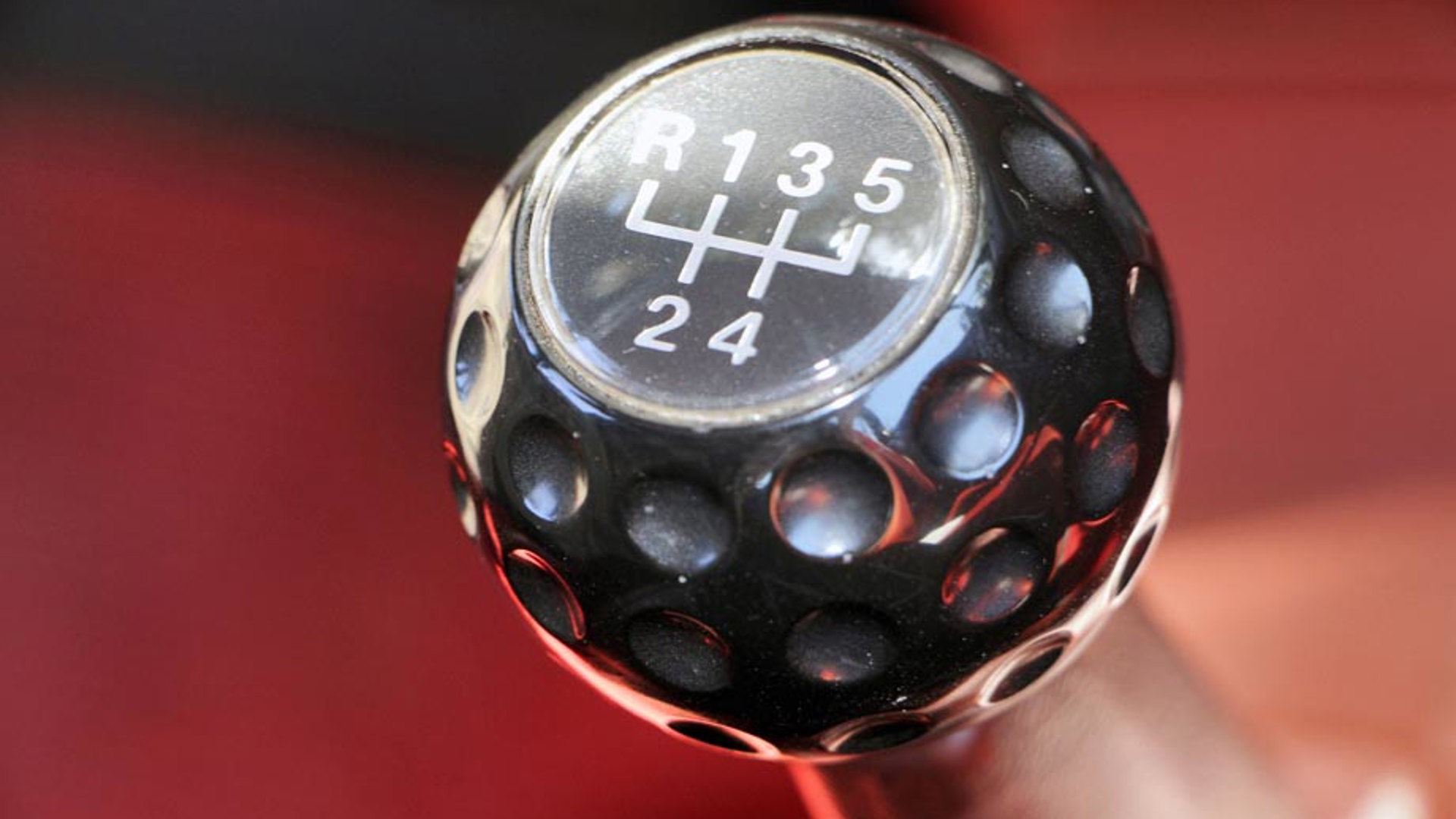“Save the manuals!” the rallying cry goes, and anyone with a drop of gear oil in their blood knows what it means. Stick shifts have become an endangered species, even in many sports cars. But just how did we get here? And more importantly, where is this going?
Early cars had manual transmissions because the technology hadn’t yet arrived. But automakers were working on it, knowing it would be a sales advantage. In 1939, Chrysler introduced a semi-automatic system, called Fluid Drive, which it advertised to “women who never wanted to drive before, because it looked too complicated,” while “experienced drivers have nothing to learn or unlearn, though they find a lot more pleasure in driving” by not having to use the clutch as much.
A year later, General Motors introduced the first mass-produced, fully automatic automobile transmission, dubbed the Hydra-Matic, on Oldsmobile. When it was offered on Cadillacs in 1941, at an extra $110 on a car that averaged about $1,500, it was chosen by 30 percent of buyers.

The two-pedal transmission rapidly gained popularity, and by the 1980s, only about 35 percent were buying cars with three pedals. Today, in Canada, it’s less than four percent.
So why the switch? Basically, while enthusiasts shake their heads in wonder, the majority of people aren’t that much into driving. They just want something that will start, stop, steer, and with any luck, be in the shop as little as possible.
And even for enthusiasts, automatics can have a place. Many are so technologically advanced that they shift faster than the best drivers can, such as Porsche’s Doppelkupplung (PDK, for those whose German needs work). “On the racetrack, I’d say the PDK is better because it’s quicker,” says Andreas Preuninger, head of Porsche GT.
“All race cars have shifters on the wheel. It shifts quicker, and you keep your hand on the wheel.”
But Preuninger also believes the company erred when it offered its 911 GT3 only with an automatic. “We lost some of the hardcore enthusiasts,” he said. “We gained a lot of new customers, but we lost our old and very loyal customers, because they wanted to shift. We took an interface away from them. We thought there was no demand, but there are people who want to get involved with a clutch they can operate.”

To that end, the new GT3 will offer both, but Preuninger expects only about one-third of customers to opt for the stick. That guesswork makes it tough for carmakers, which have to place orders with suppliers well in advance of assembly and need to know exactly how many transmissions they’re going to need.
On average, manual transmissions cost less to make than automatics. That can be a boon for automakers in lower-priced segments, since a bare-bones model will give them that all-important rock-bottom price in their ads. But companies have to make money if they still want to be companies, and so there are often some restrictions on the options.
On inexpensive models like Nissan’s Micra or Chevrolet’s Spark, the base trim with stick shift starts at less than $10,000. But if you want air conditioning, as the vast majority of buyers do, you need to move up to an automatic. This nets the automaker a little extra cash, but just as importantly, it helps product planners and dealers figure out how many cars to order, to prevent the deadly sin of unsold vehicles at the back of the lot.
And it can be a self-perpetuating cycle: since fewer people want standard transmissions, some new-car buyers who might opt for a manual choose an automatic instead, simply because it’ll have more appeal and a higher resale value at trade-in.
That’s not to say that the third pedal is finished just yet. Some sports-minded models, like Ford’s Focus ST and RS, and Honda’s upcoming Civic Si, only come with a manual, while others like the Corvette charge you extra for an automatic.
Keep the faith, fans: the manual transmission may be down, but it’s certainly not out.

